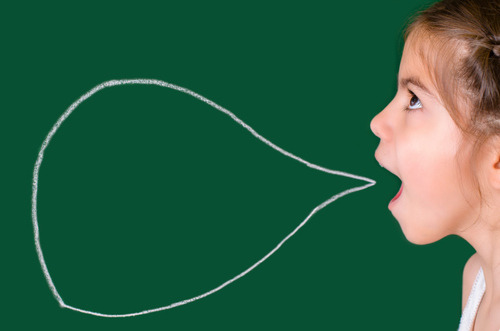Tuesday, July 22, 2014
Friday, July 18, 2014
Need to up your knowledge on the struggles of our homeless families...........
audio by title homeless children youth and families
Homeless Children, Youth and Families
37:51 minutes (9 MB)
By Diane Nilan, 2008
Diane Nilan is an advocate, working to raise awareness of homelessness for children and teens.
In July 2005 Nilan created HEAR US, a nonprofit organization to give voice and visibility to homeless children, youth and families. In November 2005, having sold her house, car and most of her possessions, Nilan purchased an RV to set out on an extraordinary venture: to create a documentary featuring kids talking about their homelessness.
Diane Nilan’s unconventional approach takes her to places not typically thought of as experiencing homelessness: rural areas, resort communities, affluent cities and towns. She’s invited homeless children, teens, and parents to share their thoughts on video, highlighting the plight and dreams of the most invisible homeless population: young people and families.
Learn about HEAR US at:
http://www.hearus.us/
http://www.hearus.us/
Read Diane's blog at:
http://beta.razoo.com/member/dianen/blog
http://beta.razoo.com/member/dianen/blog
This lecture was organized and recorded by the SUNY Fredonia Teacher Education Club on Tuesday, Oct. 21, 2008 at 7pm in the Williams Center, SUNY Fredonia.
Thursday, July 17, 2014
Soft Skills to Pay the Bills — Mastering Soft Skills for Workplace Success
 |
- Download the entire document (PDF)
- Order a hard copy (for youth services professionals)
- View en Español
- View the Soft Skills video series
Overview
"Skills to Pay the Bills: Mastering Soft Skills for Workplace Success," is a curriculum developed by ODEP focused on teaching "soft" or workforce readiness skills to youth, including youth with disabilities. Created for youth development professionals as an introduction to workplace interpersonal and professional skills, the curriculum is targeted for youth ages 14 to 21 in both in-school and out-of-school environments. The basic structure of the program is comprised of modular, hands-on, engaging activities that focus on six key skill areas: communication, enthusiasm and attitude, teamwork, networking, problem solving and critical thinking, and professionalism.
Click here for more.
STUDENT TIP: Essential NETiquette for Students

FROM: Google+ DPI GAFE
Original: 6/11/2014 Educational Technology and Mobile Learning
Netiquette ( net + etiquette) is the code of proper conduct applied to virtual online spaces. This code is dictated by common sense rules ( manners ) and social conventions. Teaching students about netiquette is just as important as teaching them to use technology in their learning. Crafting a netiquette memo for your class and informing your students about the importance of these rules will definitely help you create an engaging, respectful, and meaningful learning environment where collaboration and diversity of opinions are celebrated.
Friday, July 11, 2014
World Language Classes 21st Century Style
In a world of global accessibility, why not connect with students abroad?
World Language --- 21st century style! Click here for ideas.
Thursday, July 10, 2014
How Finland Keeps Kids Focused Through Free Play
An American teacher in Helsinki questioned the national practice of giving 15 minute breaks each hour—until he saw the difference it made in his classroom.
Like a zombie, Sami—one of my fifth graders—lumbered over to me and hissed, “I think I’m going to explode! I’m not used to this schedule.” And I believed him. An angry red rash was starting to form on his forehead.
Yikes, I thought. What a way to begin my first year of teaching in Finland. It was only the third day of school and I was already pushing a student to the breaking point. When I took him aside, I quickly discovered why he was so upset.
Throughout this first week of school, I had gotten creative with my fifth grade timetable. Normally, students and teachers in Finland take a 15-minute break after every 45 minutes of instruction. During a typical break, students head outside to play and socialize with friends while teachers disappear to the lounge to chat over coffee.
Click here to read more. WOW - I sure wish I could do some action research studies on this!
Yikes, I thought. What a way to begin my first year of teaching in Finland. It was only the third day of school and I was already pushing a student to the breaking point. When I took him aside, I quickly discovered why he was so upset.
Throughout this first week of school, I had gotten creative with my fifth grade timetable. Normally, students and teachers in Finland take a 15-minute break after every 45 minutes of instruction. During a typical break, students head outside to play and socialize with friends while teachers disappear to the lounge to chat over coffee.
Click here to read more. WOW - I sure wish I could do some action research studies on this!
Wednesday, July 9, 2014
Join me in this Webinar Series
How do technology and advancements in digital media change the way that educators look at student work? This webinar, the first in a three-episode series titled, “Looking Closely at Student Work in the Digital Age,” looks at why & how students are using KQED’s “Do Now” platform to grow their personal voice and make an impact in their world.
Click here to watch the first webinar with me. Let me know your thoughts. Kathy
Click here to watch the first webinar with me. Let me know your thoughts. Kathy
Building Vocabulary - Neat Strategy for Reading and Writing
Cool chart of word options for writers. Give kids one partially filled in and challenge them to finish it!
http://weareteachers.tumblr.com/post/90368883502/love-this-chart-of-wonderful-words
http://weareteachers.tumblr.com/post/90368883502/love-this-chart-of-wonderful-words

Tuesday, July 8, 2014
12 Reasons Teachers Have the Best Job in the World












We know that teaching can be the hardest job in the world (and don’t get us started on those so-called summers off), but we also know that it can be the best job in the world. Here are 12 reasons why.
1. Every single day holds a new challenge. (OK, so occasionally the challenge involves things like “possible head lice” or “stomach bug outbreak,” but at least things are always interesting.)

2. You get to have interesting conversations with interesting people every day. (And yes, talking to a classroom of 6-year-olds about dinosaurs definitely beats talking to a room full of adults about politics.)

3. You can get your team to do (almost) anything by promising them a gold star. (OK, so technically, a gold star and a good grade, but still.)

4. No one thinks you’re being selfish when you guard your books with your life. (But really, if they would just bring them back by the due date that you have kindly written on the library card in the front pocket, you wouldn’t have to worry about it so much.)

5. Almost everyone at work thinks you’re hilariously funny. (Trust us, they are laughing with you, not at you.)

6. No one will get upset with you if your work space is a mess.

7. If you accidentally make your “mad face,” you can shrug it off as “good classroom management.”

8. You never, ever have to watch the clock. (You have 25 students to do that for you.)

9. The dress code is what we like to call “professional-might-get-glitter-glue-on-it.” (Which means that wearing slightly outdated or slightly dirty attire is just part of your teacherly charm.)

10. If you have a problem, you’ll always be able to find at least 20 people who know the answer.

11. No one will look at you like you’re crazy if you suggest blowing something up.

12. If anyone asks what you do for a living, you can honestly (and proudly) say: I make a difference. Each and every day.

image credit: thinkstock
Monday, July 7, 2014
Teaching Students to Dig Deeper
In the book, Teaching Students to Dig Deeper, ten college readiness traits are listed that I wish I had when I went to college. Here is the list of what my ideal thinkers are like (derived from Dr. David Conley's research on what incoming college freshmen need to know and be able to do when they get to college):
- Analytic thinkers break things down in to small parts that are easier to understand.
- Critical thinkers judge the information and choose the most worthy things to know.
- Creative thinkers seek solutions to problems by synthesizing what they know.
- Inquisitive thinkers are always learning new things about the world around them.
- Opportunistic thinkers take advantage of learning from people who know more.
- Flexible thinkers are willing to admit they are wrong, and resilient enough to keep at it.
- Open-minded thinkers will listen and observe but reserve judgment for later.
- Teachable thinkers are thirsty for knowledge and are actively seeking answers.
- Risk-taking thinkers aren't afraid of looking at things in a different way.
- Expressive thinkers know how to research their ideas and share their vision.
FREE weekly Professional Development opportunities
Do you want to heighten your teaching thru FREE professional development?
New items weekly.....check it out. I will definitely be trying some of these FREE options out over the summer.
Click here. Who says you can't find online ways to keep learning all year round? Kathy
New items weekly.....check it out. I will definitely be trying some of these FREE options out over the summer.
Click here. Who says you can't find online ways to keep learning all year round? Kathy
Did you know that the Smarter Balance - Depth of Knowledge Levels came from WI?
Depth of Knowledge
For many years, we have used Bloom's Taxonomy to discuss rigor or "content complexity". Now, we must transition this dialog around "Depth of Knowledge".
The DOK has 4 levels.
Level 1 - Recall and recognition.
Level 2 - Using a skill or concept. Conceptual understanding generally refers to integration and application of concepts and other ideas within a content area. Procedural understanding denotes knowledge about skills and sequence of steps, when and how these should be used appropriately, and their efficient and accurate applications
Level 3 - Strategic thinking. Analysis and other examples are given here. Non-routine problem solving as in determining author's purpose.
Level 4 - Extended thinking. Usually requires work over a period of time, including gathering information, analyzing findings, preparing reports and presenting findings.
There is a lot of good information available on the web about DOK. I encourage you to have a look for yourself.
Interestingly, DOK is not new to us in Wisconsin. It is a concept developed here (at the UW), and we have used it to analyze WKCE results for many years. Now, the SBA has adopted it so we will do well to expand our consideration as we plan our teaching and learning to meet the challenges of CCSS
Subscribe to:
Posts (Atom)

